Jun 11, 2025
- What Review Rating Format Is Amazon Testing?
- Implications of the New Review Format for New Sellers
- Implications of the New Review Format for Old Sellers
- Best Practices for Requesting Reviews on Amazon
- New Amazon Review Display - Final Thoughts
- Frequently Asked Questions
Amazon's New Review Display Format: What It Means for Sellers and How Shopkeeper Can Help
Did you know that Amazon is changing how review scores are displayed on product search results pages? This has big implications for new and old sellers, and we will cover them in this article.
As always, we will provide high-level commentary on these changes to help you understand the positives and negatives. The goal is to be prepared so you can stay one step ahead of other Amazon sellers.
And despite what you may have heard, getting more reviews from customers is still as important as ever. So make sure to read to the end of the article, where you will learn more about how Shopkeeper can automate the review request process, to help you get more reviews and beat your competition.
What Review Rating Format Is Amazon Testing?
The new review format Amazon is testing shows the overall review score and the percentage of reviews above a specific rating. For example, you may see a product listing with the review format: 4.4 (4+ stars: 90%). You can see the new customer review format in the image below:

The big takeaway here is that you cannot see the total number of reviews. Therefore, the product listings in the example above could have 100 customer reviews or 10,000.
However, customers can move their mouse cursor over the review to bring up the total. In most cases, customers probably won’t take this step - especially on mobile.
Note that Amazon is only testing this format, and nothing is confirmed. You may see further changes to the format, or it could simply be reverted back to the old style.
Implications of the New Review Format for New Sellers
Now let’s consider the biggest implications of the new review format for new Amazon sellers. This can help you prepare for changes to compete against other sellers.
● Easier to catch up: New products can catch up to established products quicker because customers can only see the overall rating instead of the review count. Therefore, new sellers can potentially tackle more competitive niches where sellers have 10,000+ reviews, and compete with just a few hundred reviews.
● Focus on quality: Furthermore, new sellers can get an advantage by focusing more on quality to drive up the perceived value from the new review rating format. By focusing on delivering a quality product, the percentage of high review scores will increase.
● Still have to work for organic rankings: However, those established products already have a high sales velocity and favorability with the Amazon search algorithm, so beating them to the top spots for organic ratings is still difficult.
Overall, the new Amazon review rating is good news for sellers launching products in competitive niches. It may potentially help you win sales against tough competitors that have been dominating the market for years.
Implications of the New Review Format for Old Sellers
Now let’s turn our attention to how the new review format will impact old sellers. Change can be scary for established sellers who have figured out the Amazon game. However, you can't bury your head in the sand, and hope changes don’t affect you. With that thought in mind, here are a few important points established sellers should consider:
● Harder to compete: Established sellers may have a harder time competing against new product listings since they cannot rely on their high review count to be the deciding factor for buyers. However, they can continue to dominate the organic Amazon search results using their sales and keyword history.
● Branding: Creating a strong brand is more important now than ever before. That’s because established brands have an easier time attracting sales. Hence, you’ll get more sales from customers who decide based on brand more than small differences in review scores.
One very important factor in maintaining a high sales velocity and search ranking is staying in stock! After all, Amazon doesn’t want to show a listing to customers if it’s going to run out of stock. So proper inventory management is more important than ever.
Here at Shopkeeper, we provide industry-leading inventory management features that help you easily keep track of stock and know how long your inventory is expected to last, based on real sales data.
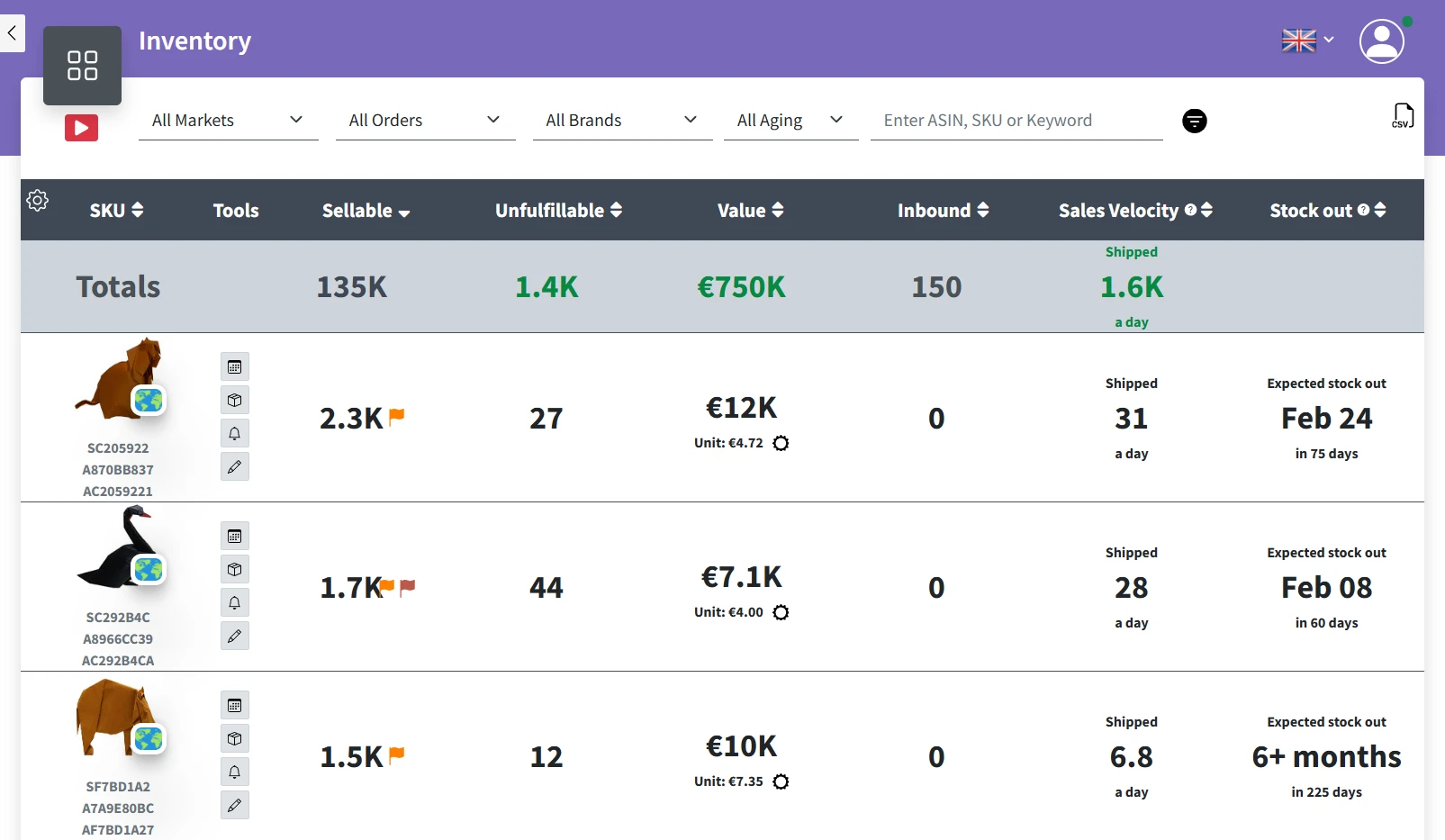
We also have specific inventory tools to help you optimize your orders and shipments, including our Order Scheduler:
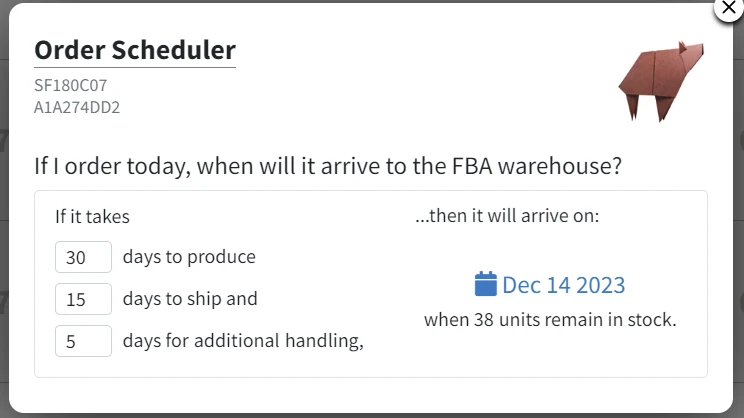
This tool allows you to estimate when a new order will arrive at Amazon’s warehouses, and also tells you how many units you’ll have left in stock at that time.
Next, we have our Re-Order Estimator, an incredibly powerful tool that allows you to tell Shopkeeper how many months of stock you want to cover, and we’ll calculate the amount of units you need to re-order, based on your real historical sales data.
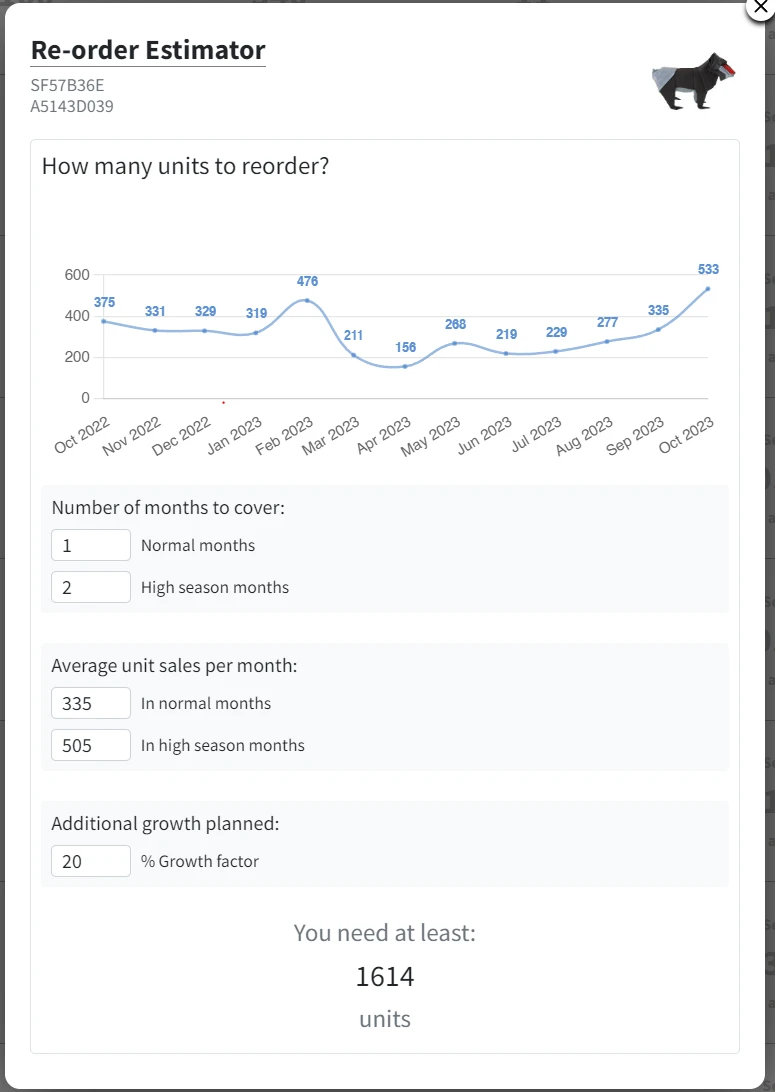
No more blindly guessing, with Shopkeeper you can make automated, data-based decisions - optimizing your inventory, improving your IPI score, and saving on storage fees!
Best Practices for Requesting Reviews on Amazon
Regardless of the changes Amazon is implementing, it’s still important to get as many high-quality reviews as possible.
Of course, every Amazon seller knows that’s easier said than done as Amazon customers just don’t leave reviews very often.
But there’s one simple and effective way to get more reviews - by simply asking!
Amazon “Request a Review” Button
Did you know that Amazon has a button to request reviews from customers? You can find it on the order details page in Seller Central:

So for each specific order that you want to send a review request for, Amazon will send a template looking something like the one below:
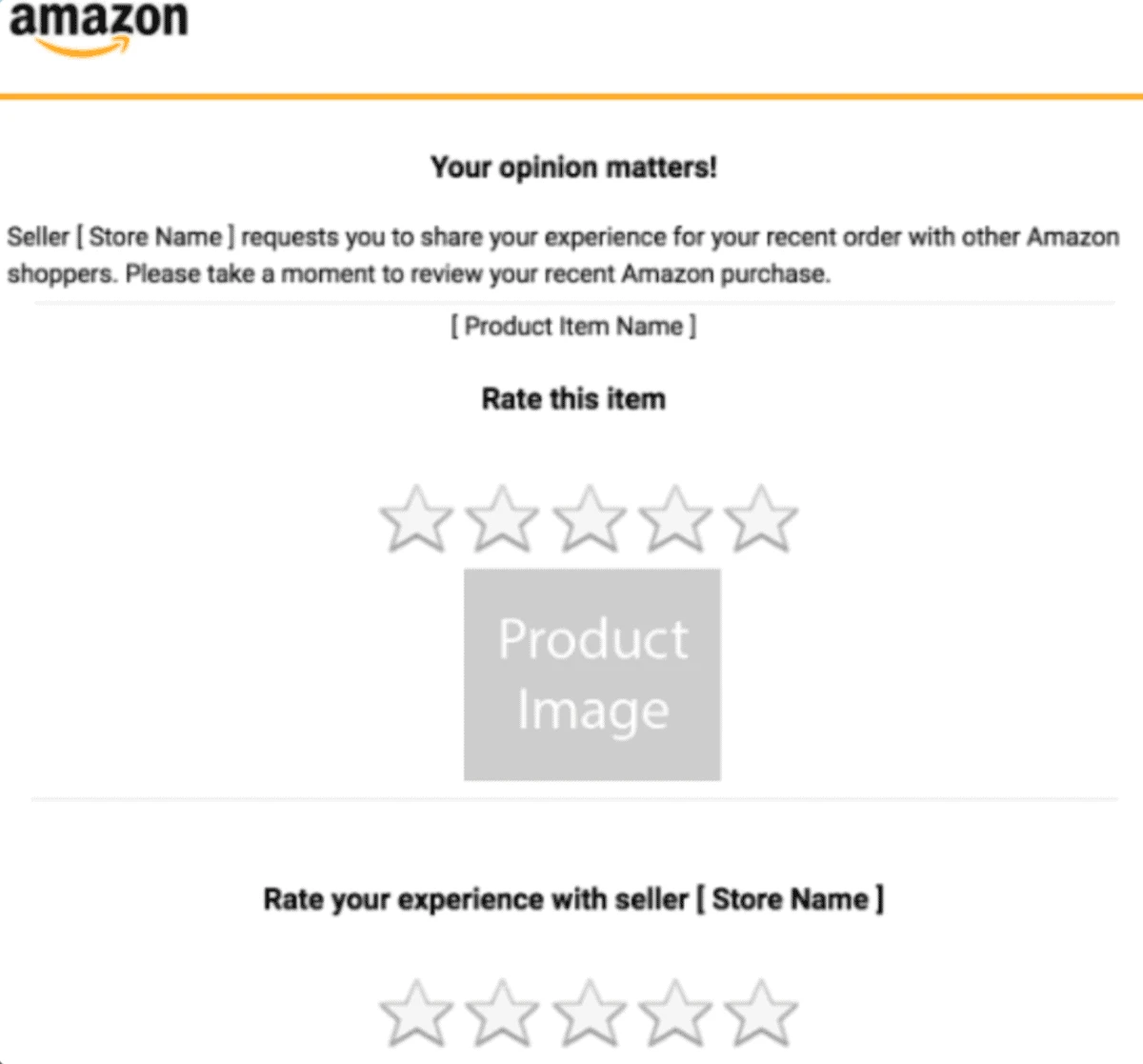
Amazon optimizes the performance of these review requests by altering the wording. However, you have no control over the content of the message and you have to send these emails one by one, going to each individual order page in Seller Central - definitely a tedious job!
But thankfully for Shopkeeper users, there’s an easier way:
Shopkeeper’s Automated Review Requests
Shopkeeper’s review request feature lets you quickly and easily request reviews one by one using the Review Requests page under the Sales tab.
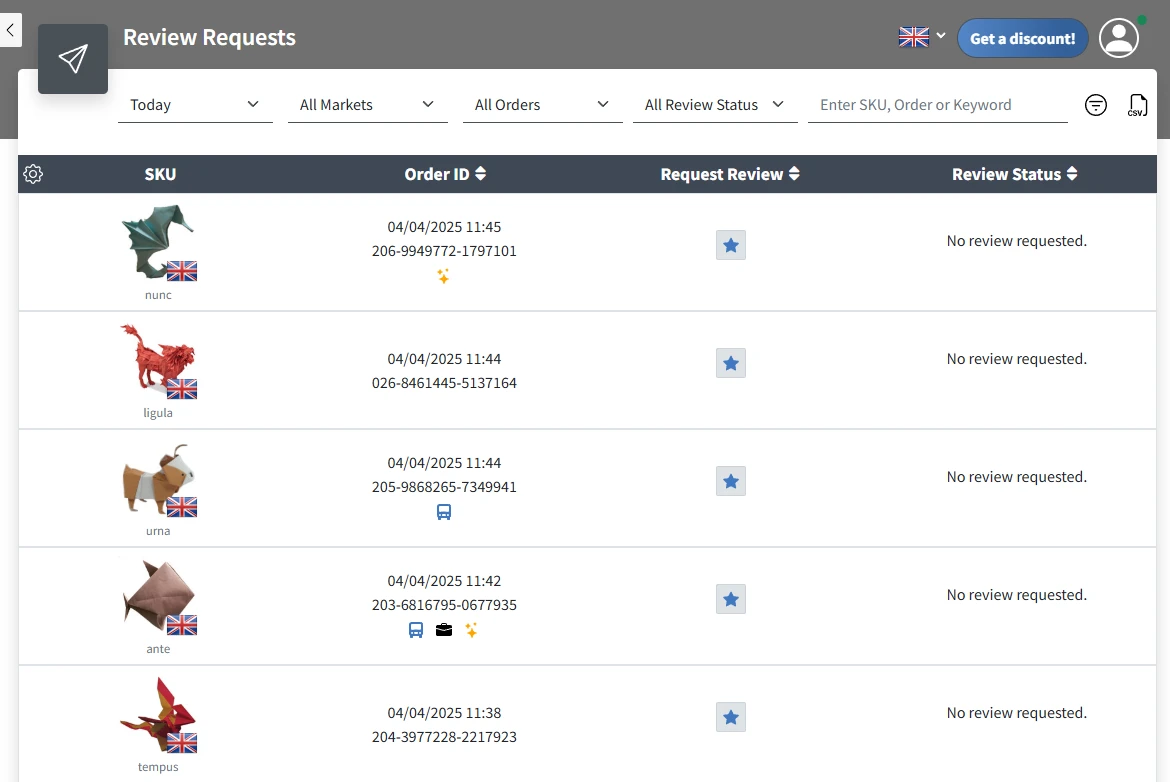
How it works is very simple:
Clicking the star triggers Amazon to send their automated review request email.
This is not done through Buyer-Seller messaging, just through Amazon’s review request system, to be 100% compliant.
This email is the exact same as Amazon sends when you click the “Request a Review” button on the Order Details page in Seller Central.
The only difference is that Shopkeeper are triggering it for you automatically so you don’t have to do it manually, order by order, on Seller Central.
And better yet, you can set it so that these reviews are automatically requested 10 days after an order is placed with the Shopkeeper Alerts Settings page, so you don’t even have to click a button - just sit back and watch the reviews roll in.
New Amazon Review Display - Final Thoughts
To conclude, the new review display changes Amazon is testing means that customers can only see your overall score and the percentage of reviews of a specific number. Notably, the number of reviews is removed, thereby bridging the gap between old and new product listings. It makes it easier for new sellers to compete with established ones.
However, the core strategies to succeed on Amazon aren’t changing. You still need a solid review automation strategy and inventory management to maintain sales velocity. Shopkeeper can help you with these fundamental aspects of running an Amazon business.
Frequently Asked Questions
Now let’s go over some of the most frequently asked questions surrounding the new customer review display changes.
Is the new Amazon review display final?
The new Amazon review display is not final because it is still in the testing phase. That’s why the changes aren’t rolled out for all Amazon marketplaces and product searches. In fact, nothing with Amazon is final since they are always optimizing their site and search results.
Does Amazon allow sellers to request reviews?
Yes, Amazon does allow sellers to request reviews, but there are rules you need to follow. Therefore, you must be compliant with Amazon’s seller policies or you’ll get penalized.
Here at Shopkeeper, our review request automation tool is 100% accepted by Amazon.
How long does it take for Amazon reviews to display?
It usually takes about 72 hours for reviews to appear after they are posted. However, it’s also possible for reviews to take around 4-5 days.
Can customers still see my total review count?
Yes, customers can still see your total review count when hovering their mouse cursor over your review rating. Also, they can see your total review score when visiting the product listing page. The customer review display changes discussed in this article relate to search result pages.
Should I be worried about the new Amazon review display format?
No, you shouldn't be worried about the new Amazon review display format. However, you should be prepared for any changes so your business can remain competitive. With that thought in mind, you can gain an advantage by using the tools available here at Shopkeeper, such as Review Automation and Inventory Management.



